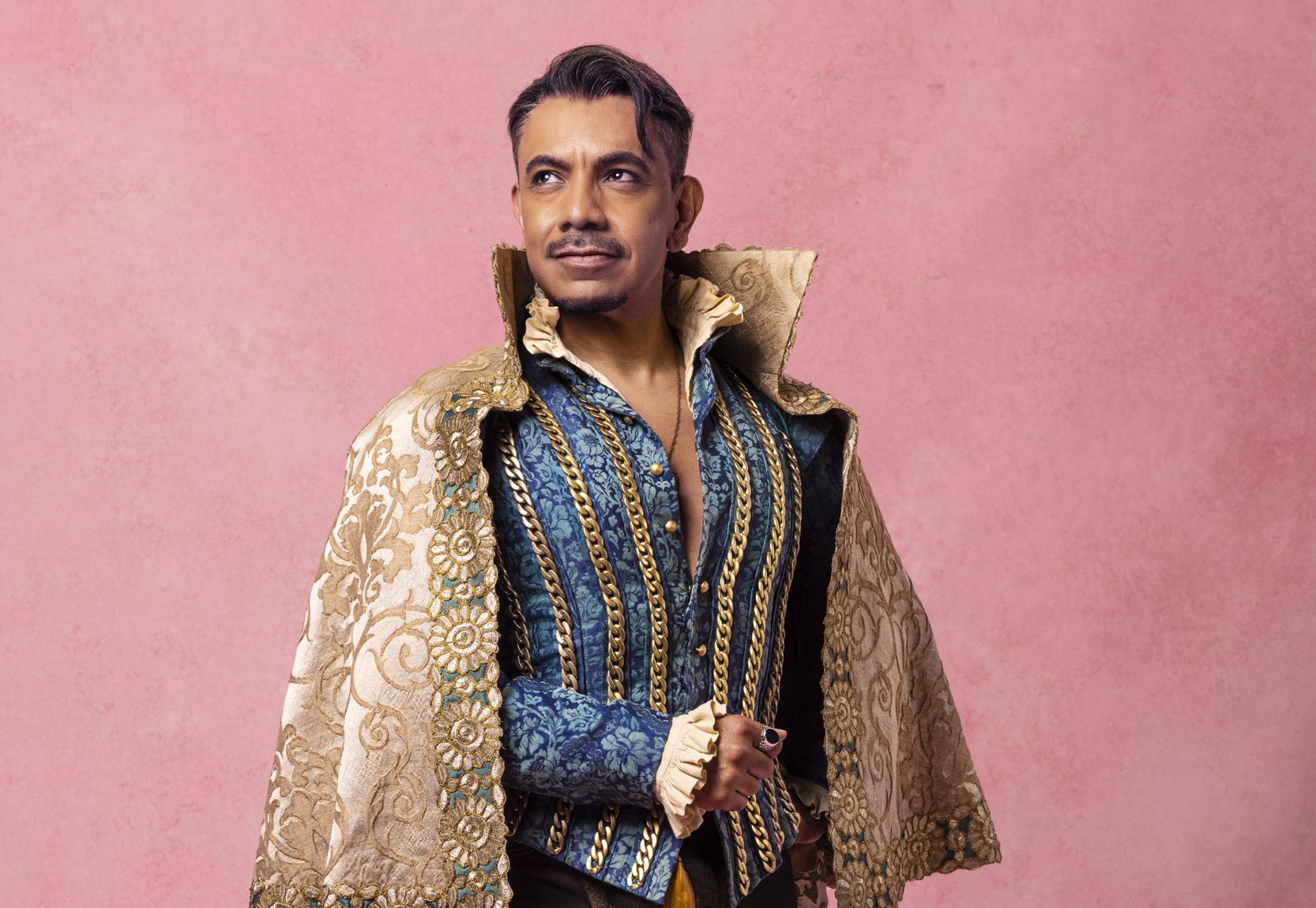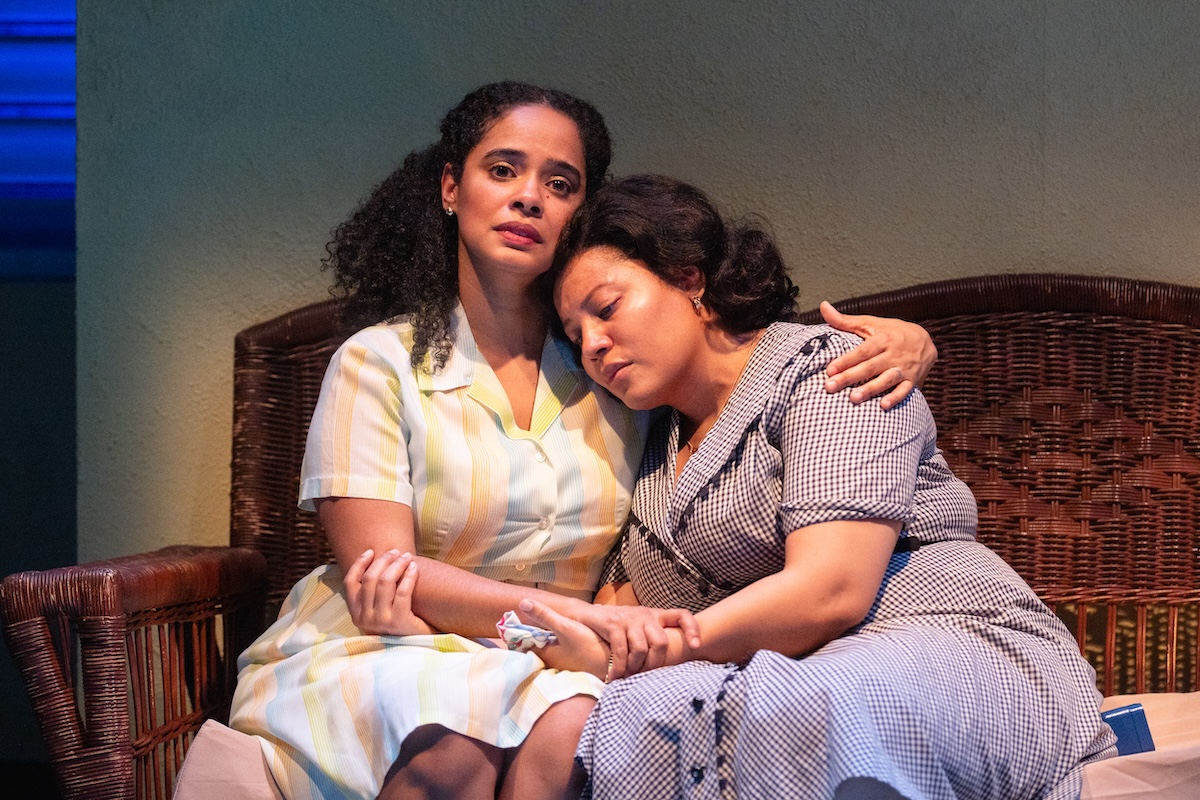Sunday in the Park With George

Sunday in the Park With George
(© Michael Lamont)
“White. A blank page or canvas. So many possibilities.”
In his staging of Stephen Sondheim’s and James Lapine’s 1984 Pulitzer Prize-winning musical Sunday in the Park With George, director Jason Alexander takes deeply — and literally — to heart this opening observation. By withholding color from the first half of the show and focusing on inspirational white, Alexander does “give us something new to see” in terms of perspective. Unfortunately, a great deal of dramatic power is sacrificed for that vision.
In addition, the often tedious pace he employs throughout further dims the luster of this complex, shimmering show — with its vastly different two acts — as does the generally thin sound from both the cast and orchestra. And while technically impressive in many aspects, the driving artistic passion that is the show’s heart seems to have been largely whitewashed from this production.
Moreover, rising Broadway stars Manoel Felciano and Kelli O’Hara, who headline the show, both fare much better in their Act II personas than they do as the disconnected, frustrated lovers in the colorless Act I, where they tend to come across as too young and immature to be fully believable.
Although specifically constructed around the life of French pointillist painter Georges Seurat (Felciano) and his creation of the groundbreaking work “A Sunday Afternoon on the Island of La Grande Jatte,” the musical, more broadly speaking, is a meditation on the art of making art and the tremendous personal costs extracted from the artist in the process.
It is Georges’ unshakable devotion to his art at the expense of Dot (O’Hara), the woman he loves, that fuels the first half of the show. The second half, which takes place many decades later, concentrates on Seurat’s American-born great-grandson, George (also played by Felciano), who is descended from Marie (also played by O’Hara), Georges’ illegitimate daughter with Dot. George is also an artist, albeit one who sculpts with machines and colored light (“chromolumes”) instead of canvas and paint, and he, too, is at a crossroads in his career. Not wanting to do what’s already been done, he yearns to stretch himself in new directions, but is at a loss as to how to make that happen.
Like his namesake, George has been unable to maintain a romantic relationship and he refuses to compromise his artistic vision for the lure of the almighty dollar. Depressed and confused, he travels to Paris following the death of Marie to visit the island that inspired his ancestor to create the greatest work of his tragically short life. There, past and present come together to resuscitate George’s ailing spirit.
The Act I white concept has also been applied to Bethany Jane Bohatila’s and Heather Carleton’s costumes, which have been completely rendered in shades of white, cream and beige, as well as scenic designer Bradley Kaye’s moveable, three-sided panels, featuring the urbanized “La Grande Jatte” of Act II on one side, and the inviting, demanding white canvas of Act I — as well as the preliminary sketches for the painting on the remaining two sides.
Emotionally speaking, there is also a blandness to Georges and Dot individually, as well as their relationship. With only a modest amount of intensity and intimacy created between them, and because they seem to have so little at stake, it becomes hard to connect to either of them or to care about what happens.
Given the constraints of the Reprise contract, there are limitations to what can be achieved in terms of sets, costumes, and lighting — which, in turn, forces some creative problem solving. In lieu of Dot’s famous breakaway dress, for example, a stationary shadow appears behind O’Hara as Dot mentally steps free from posing for Georges. For the chromolume sequence, lighting designer Jason H. Thompson forgoes the referenced machine and fills the stage with focused colored spots and a striking video display that zooms in on specific points of the painting and augments those points with swirling atoms of light.
However, other solutions are less effective. The white concept has interest and value until the climactic end of Act I. Despite an infusion of green to the tree sketches and background, the spine-tingling impact of seeing Seurat’s painting form itself and come together to the sound of a swelling orchestra and ensemble voices is severely compromised without the color. The result is a disappointing Act I ending.
As Sondheim so pointedly notes in the Act II number “Putting It Together”: “Having just a vision’s no solution, everything depends on execution.”












